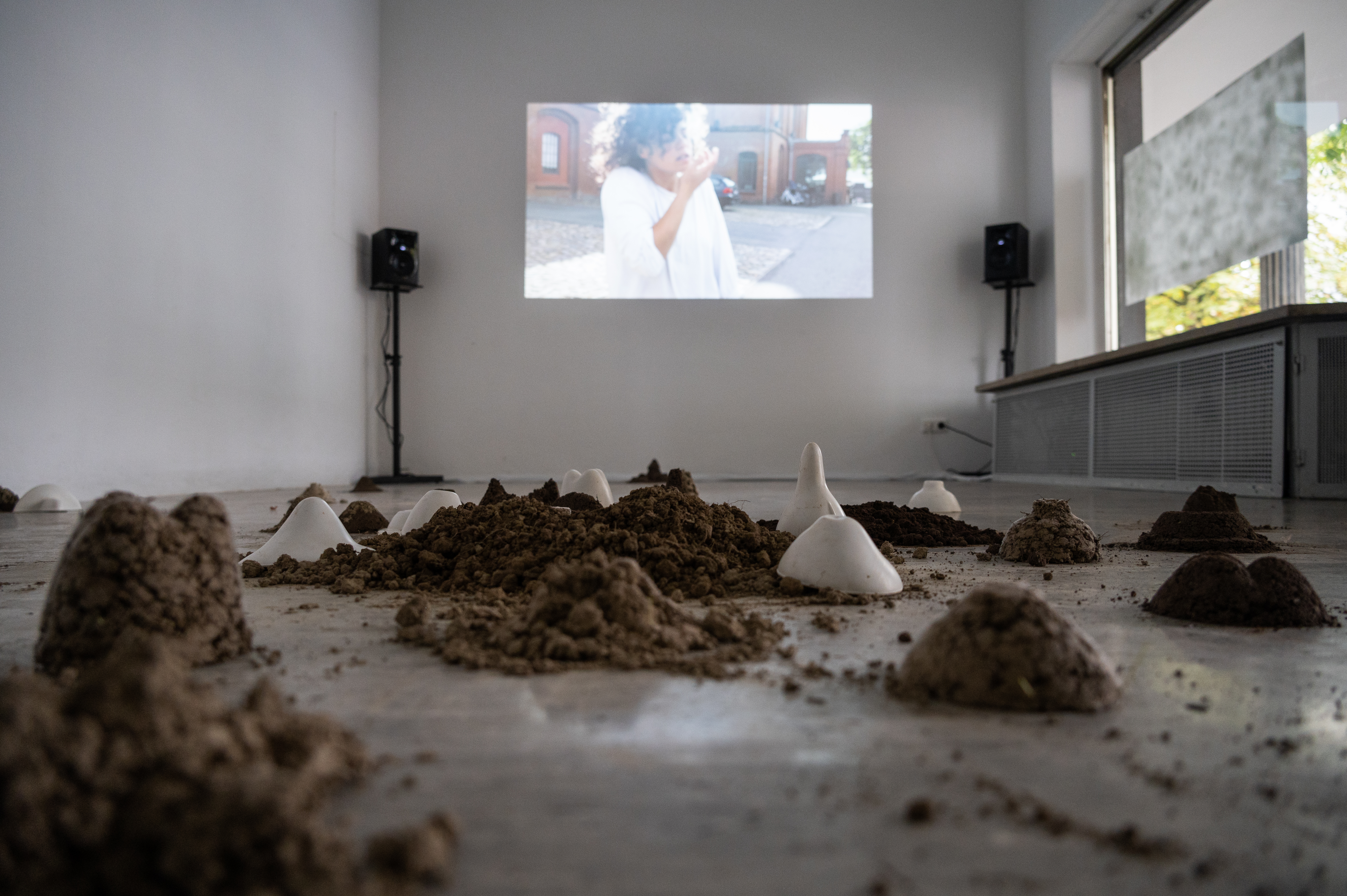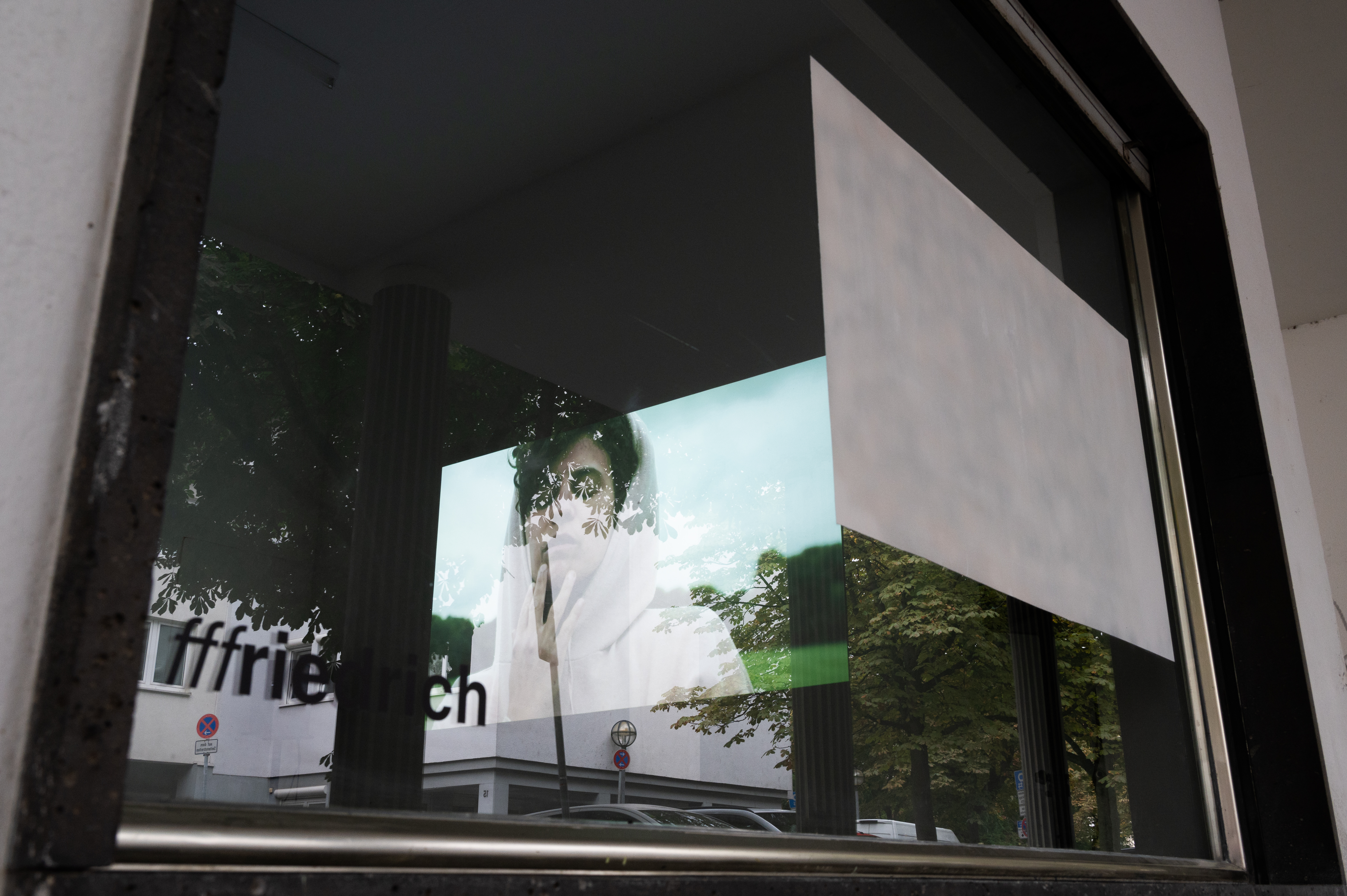memory is a social organ
Eine Ausstellung zur Erinnerung der Gegenwart.
10.09. - 19.09.21
with
Talya Feldman, Ludmila Hrachovinová, Jamila Sharon Hutchinson, Ülkü Süngün
curated by
Asta von Mandelsloh, Laura Schilling

Verbunden im Sehen und Hören leiste ich Unbekannten eine Weile Gesellschaft. Das Erzählen von Geschichten durch die Kunst ist Arbeit am sozialen Gedächtnis. In der Ausstellung memory is a social organ geben die Künstlerinnen Talya Feldman, Ludmila Hrachovinová, Sharon Jamila Hutchinson und Ülkü Süngün übergangenen Geschichten eine Stimme und verbildlichen Prozesse kollektiver Erinnerung.
Connected in sound and sight, I keep strangers company for a while. Storytelling through art is work with social memory. In the exhibition memory is a social organ, the artists Talya Feldman, Ludmila Hrachovinová, Sharon Jamila Hutchinson and Ülkü Süngün give voice to forgotten stories and visualise processes of collective memory.
Opening, Thursday 09.09. 4 – 8 pm
Friday 10.09. – Sunday 12.09. 3 – 8 pm
Tuesday 14.09. – Friday 17.09. 3 – 6 pm
Saturday 18.09. + 19.09 Sunday 3 – 8 pm and by appointment via mail memory.socialorgan@gmail.com
Screening TITIA Friday, 10.09., Wednesday, 15.09. and Sunday, 19.09. 8pm
Please maintain hygiene and distance regulations, maximum of 2 people in the space at the same time.
 Installation view memory is a social organ, 2021, Image: Charlotte Bösling
Installation view memory is a social organ, 2021, Image: Charlotte Bösling
memory is a social organ.
Eine Ausstellung zur Erinnerung der Gegenwart
Das Betreten des Ausstellungsraumes ist ein Wagnis, neue Bekanntschaften zu schließen: Hier finden sich künstlerische Arbeiten, die übersehene oder verdrängte Erfahrungen in erinnerbare Geschichten verwandeln. Verbunden im Sehen und Hören leiste ich ihnen eine Weile Gesellschaft.
Die Ausstellung memory is a social organ geht von der Annahme aus, dass Kunstwerke ebenso wie Literatur oder Film bei der Bildung geteilter Erinnerungen eine Rolle spielen. Sie fangen die Aufmerksamkeit Einzelner ein und schaffen damit die Bedingungen für eine kognitive und sinnlich-emotionale Öffnung gegenüber dem Leben Unbekannter. Das Erzählen von Geschichten durch die Kunst ist Arbeit am sozialen Gedächtnis.
Die Künstlerinnen Talya Feldman, Ludmila Hrachovinová, Sharon Jamila Hutchinson und Ülkü Süngün geben übergangenen Geschichten eine Stimme und verbildlichen Prozesse kollektiver Erinnerung.
In Hrachovinovás Arbeit shaping spiegelt die Fragilität, aber auch die Formbarkeit der Skulpturen aus Erde eben jene Dynamik kollektiver Erinnerungsprozesse wider. Talya Feldmans Arbeit Elegy ist eine aufgezeichnete Bewegungsperformance, ein Zeugnis für die emotionale Fähigkeit des Körpers, Trauer und Stärke zu vermitteln – und die Stimmen der Opfer von Terror über geografische Grenzen und Sprachbarrieren hinwegzutragen. Das dokumentarische Video-Essay TITIA von Sharon Jamila Hutchinson befragt die Zeug*innenschaft der Kamera, vertraut und misstraut der Kraft des Dokumentarischen zugleich. Mit Interview-Fragmenten zeichnet sie die historische Entwicklung und Kontinuität rassistischer, polizeilicher und staatlicher Gewalt nach. In Ülkü Süngüns TUTORIAL Takdir. Die Anerkennung entsteht im gemeinsamen Sprechen Erinnerung. Gleichzeitig lädt die Arbeit dazu ein, über einen eingeschränkten Blick hinauszuschauen.
In der Gruppenausstellung nehmen die Arbeiten der Künstler*innen in den Fokus, wie Gegenwärtiges zu Erinnerung wird. Sie eröffnen Räume für Sensibilität und Multiperspektiven. Darin wird die Funktion der Erinnerung als soziales Organ in unserer Gesellschaft sichtbar.

Installation view memory is a social organ, 2021, Image: Charlotte Bösling
Entering the exhibition space is a venture of making new acquaintances: Here, we find artistic works that transform over-looked or repressed experiences into memorable stories. Connected through seeing and hearing, I keep them company for a while.
The exhibition memory is a social organ is based on the assumption that works of art, like literature and film, play a role in the formation of shared memories. They capture the attention of individuals and, with it, create the conditions for a cognitive and sense-based emotional passage into the lives of strangers. Storytelling through art is work on social memory.
The artists Talya Feldman, Ludmila Hrachovinová, Sharon Jamila Hutchinson and Ülkü Süngün give voice to overheard stories and visualise processes of collective memory. In Ludmila Hrachovi-nová’s work shaping, the fragility and the malleability of the earth-en sculptures reflect precisely this dynamic of collective memory processes. Talya Feldman’s work Elegy is a video recorded perfor-mance of movement. A testament to the emotive ability of the body to communicate grief, power - and to carry the voices of victims of terror beyond geographic borders and the barriers of language. The documentary video essay TITIA by Sharon Jamila Hutchin-son raises questions about how the eye of the camera can give testimo-ny – she does this, trusting whilst also regarding with suspicion its capacity to document and chronicle. Utilizing fragments from different interviews, she traces both the historical development and the continual presence of racist police and state violence. In Ülkü Süngün’sTUTORIAL Takdir. Die Anerkennung. recognition and memory are established in the act of reciting together, whilst inviting its beholder to look beyond a limited view of the world.
In the group exhibition, the artists’ works focus on how the present becomes memory. They open up spaces for sensitivity and multiple perspectives. The function of memory as a social organ in our society becomes visible.

Installation view memory is a social organ, 2021, Image: Charlotte Bösling

Installation view memory is a social organ, 2021, Image: Charlotte Bösling
